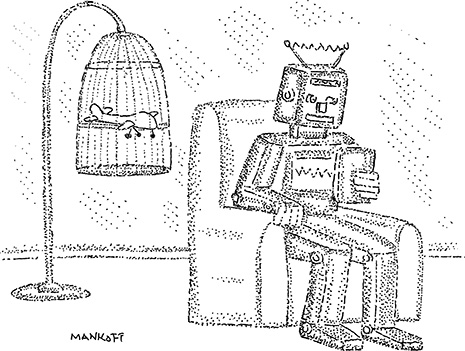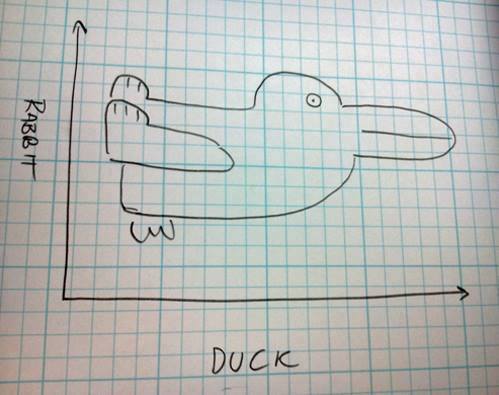- very interesting piece
- covers off Cth Fund and IOM comparative work
- also discusses social determinants, and specifically the idea that less equal societies are comparatively less healthy across the board (including the wealthy)
- The critical importance of poverty prevalence in a country’s health (AU is 12.5% c.f. average of 9% cf. US of 15%)
Woolf explained this disparity by citing the work of the British social epidemiologist Richard Wilkinson, who has proposed that income inequality generates adverse health effects even among the affluent. Wide gaps in income, Wilkinson argues, diminish our trust in others and our sense of community, producing, among other things, a tendency to underinvest in social infrastructure. Furthermore, Woolf told me, even wealthy Americans are not isolated from a lifestyle filled with oversized food portions, physical inactivity, and stress. Consider the example of paid parental leave, for which the United States ranks dead last among O.E.C.D. countries. It’s not hard to see how such policies might have implications for infant and child health.
- Political systems have important effects on policy: fewer “choke points for special interests to block or reshape legislation,” such as filibusters or Presidential vetoes allows change to be enacted without extensive political negotiation.
Other countries have used their governments as instruments to improve health—including, but not limited to, the development of universal health insurance. Health-policy analysts have therefore considered the effect that different political systems have on public health. Most O.E.C.D. countries, for example, have parliamentary systems, where the party that wins the majority of seats in the legislature forms the government. Because of this overlap of the legislative and executive branches, parliamentary systems have fewer checks and balances—fewer of what Victor Fuchs, a health economist at Stanford, calls “choke points for special interests to block or reshape legislation,” such as filibusters or Presidential vetoes. In a parliamentary system, change can be enacted without extensive political negotiation—whereas the American system was designed, at least in part, to avoid the concentration of power that can produce such swift changes.
- universal health coverage is not just altruistic, but also self-interested
- healthcare is only responsible for between 10 and 25% of improvements in life expectancy – SDH responsible for the rest, mainly elements that impact on early childhood
Most experts estimate that modern medical care delivered to individual patients—such as physician and hospital treatments covered by health insurance—has only been responsible for between ten and twenty-five percent of the improvements in life expectancy over the last century. The rest has come from changes in the social determinants of health, particularly in early childhood.
http://www.newyorker.com/online/blogs/elements/2014/06/why-america-is-losing-the-health-race.html
WHY AMERICA IS LOSING THE HEALTH RACE
The second report, commissioned by the National Institutes of Health, and conducted by the National Research Council (NRC) and the Institute of Medicine (IOM), convened a panel of experts to examine health indicators in seventeen high-income countries. It found the United States in a similarly poor position: American men had the lowest life expectancy, and American women the second-lowest. In some ways, these reports were not news. As early as the nineteen-seventies, a group of leading health analysts had noted the discrepancy between American health spending and outcomes in a book called “Doing Better and Feeling Worse: Health in the United States.” From this perspective, the U.S. has been doing something wrong for a long time. But, as the first of these two reports shows, the gap is widening; despite spending more than any other country, America ranks very poorly in international comparisons of health. The second report may provide an answer—supporting the intuition long held by researchers that social circumstances, especially income, have a significant effect on health outcomes.
Americans’ health disadvantage actually begins at birth: the U.S. has the highest rates of infant mortality among high-income countries, and ranks poorly on other indicators such as low birth weight. In fact, children born in the United States have a lower chance of surviving to the age of five than children born in any other wealthy nation—a fact that will almost certainly come as a shock to most Americans. But what causes such poor health outcomes among American children, and how can those outcomes be improved? Public-health experts focus on the “social determinants of health”—factors that shape people’s health beyond their lifestyle choices and medical treatments. These include education, income, job security, working conditions, early-childhood development, food insecurity, housing, and the social safety net.
Steven Schroeder, the former president of the Robert Wood Johnson Foundation—the largest philanthropic organization in the United States devoted to health issues—had a definitive answer to my question about why Americans might be less healthy than their developed-country counterparts. “Poverty,” he said. “The United States has proportionately more poor people, and the gap between rich and poor is widening.” Seventeen per cent of Americans live in poverty; the median figure for other O.E.C.D. countries is only nine percent. For three decades, America has had the highest rate of child poverty of any wealthy nation.
Steven Woolf, of Virginia Commonwealth University, who chaired the panel that produced the NRC-IOM report, also pointed to poverty when I asked him to explain the causes of America’s health disadvantage. “Could there possibly be a common thread that leads Americans to have higher rates of infant mortality, more deaths from car crashes and gun violence, more heart disease, more AIDS, and more premature deaths from drugs and alcohol? Is there some common denominator?” he asked. “One possibility is the way Americans, as a society, manage their affairs. Many Americans embrace rugged individualism and reject restrictions on behaviors that pose risks to health. There is less of a sense of solidarity, especially with vulnerable populations.” As a percentage of G.D.P., Woolf observed, the U.S. invests less than other wealthy countries in social programs like parental leave and early-childhood education, and there is strong resistance to paying taxes to finance such programs. The U.S. ranks first among O.E.C.D. countries in health-care expenditures, but as Elizabeth Bradley, a researcher at Yale, has documented, it ranks twenty-fifth in spending on social services.
The NRC-IOM report emphasized the effect of social forces on children and how those forces carry over to affect the health of adults, noting that American children are “more likely than children in peer countries to grow up in poverty” and that “poor social conditions during childhood precipitate a chain of adverse life events.” For example, of the seventeen wealthy democracies included in the report, the U.S. has the highest rates of adolescent pregnancy and sexually transmitted diseases, and the second-highest prevalence of H.I.V. This platform of adverse health influences in childhood sets up the health disadvantage that remains pervasive for all age groups under seventy-five in the United States.
It seems likely that many Americans would respond to these figures—and to the role poverty plays in poor health outcomes—by assuming that the data for all Americans is being skewed downward by the health of the poorest. That is, they understand that poor Americans have worse health, and presume that, because the United States has more poor people than other wealthy countries, the average health looks worse. But one of the most interesting findings in the NRC-IOM report is that even white, college-educated, high-income Americans with healthy behaviors have worse health than their counterparts in other wealthy countries.
Woolf explained this disparity by citing the work of the British social epidemiologist Richard Wilkinson, who has proposed that income inequality generates adverse health effects even among the affluent. Wide gaps in income, Wilkinson argues, diminish our trust in others and our sense of community, producing, among other things, a tendency to underinvest in social infrastructure. Furthermore, Woolf told me, even wealthy Americans are not isolated from a lifestyle filled with oversized food portions, physical inactivity, and stress. Consider the example of paid parental leave, for which the United States ranks dead last among O.E.C.D. countries. It’s not hard to see how such policies might have implications for infant and child health.
Other countries have used their governments as instruments to improve health—including, but not limited to, the development of universal health insurance. Health-policy analysts have therefore considered the effect that different political systems have on public health. Most O.E.C.D. countries, for example, have parliamentary systems, where the party that wins the majority of seats in the legislature forms the government. Because of this overlap of the legislative and executive branches, parliamentary systems have fewer checks and balances—fewer of what Victor Fuchs, a health economist at Stanford, calls “choke points for special interests to block or reshape legislation,” such as filibusters or Presidential vetoes. In a parliamentary system, change can be enacted without extensive political negotiation—whereas the American system was designed, at least in part, to avoid the concentration of power that can produce such swift changes.
Whatever the political obstacles, a major explanation for America’s persistent health disadvantage is simply a lack of public awareness. “Little is likely to happen until the American public is informed about this issue,” the authors of the NRC-IOM report noted. “Why don’t Americans know that children born here are less likely to reach the age of five than children born in other high income countries?” Woolf asked. I suggested that perhaps people believe that the problem is restricted to other people’s children. He said, “We are talking about their children and their health too.”
The superior health outcomes achieved by other wealthy countries demonstrate that Americans are—to use the language of negotiators—“leaving years of life on the table.” The causes of this problem are many: poverty, widening income disparity, underinvestment in social infrastructure, lack of health insurance coverage and access to health care. Expanding insurance coverage under the Affordable Care Act will help, but pouring more money into health care is not the only answer. Most experts estimate that modern medical care delivered to individual patients—such as physician and hospital treatments covered by health insurance—has only been responsible for between ten and twenty-five percent of the improvements in life expectancy over the last century. The rest has come from changes in the social determinants of health, particularly in early childhood.
Self-interest may be a natural human trait, but when it comes to public health other countries are showing the U.S. that what appears at first to be an altruistic concern for the health and care of the most vulnerable—especially children—may well result in improved health for all members of a society, including the affluent. Until Americans find their way to understanding this dynamic, and figure out how to mobilize public opinion in its favor, they will all continue to lose out on better health and longer lives.
Allan S. Detsky (M.D., Ph.D.) is a general internist and a professor of Health Policy Management and Evaluation and of Medicine at the University of Toronto, where he was formerly physician-in-chief at Mount Sinai Hospital. He is a contributing writer for The Journal of the American Medical Association.
Photograph by Ashley Gilbertson /VII.







